
Raylynn White
and Wound Care Management
By: Raylynn White
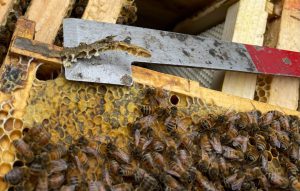 Propolis is a resinous substance with varying colors and consistencies created by the Apis mellifera from several vegetal sources. Salivary enzymes and wax are added to plant exudate to produce the resinous substance. The main sources of this plant exudate are from poplar, willow, birch, elm, alder, beech, conifer and horse chestnut trees (Martinetti, 2015). In this article, I will discuss how propolis benefits bees, how it was discovered and used in ancient society, and lastly how its antimicrobial, anti-inflammatory, anti-oxidant and immunomodulatory properties make it an important alternative treatment for wound care management today (Braakhuis, 2019).
Propolis is a resinous substance with varying colors and consistencies created by the Apis mellifera from several vegetal sources. Salivary enzymes and wax are added to plant exudate to produce the resinous substance. The main sources of this plant exudate are from poplar, willow, birch, elm, alder, beech, conifer and horse chestnut trees (Martinetti, 2015). In this article, I will discuss how propolis benefits bees, how it was discovered and used in ancient society, and lastly how its antimicrobial, anti-inflammatory, anti-oxidant and immunomodulatory properties make it an important alternative treatment for wound care management today (Braakhuis, 2019).
Propolis is an important contributor in maintaining a hemostatic environment in the honey bee hive. It is a natural adhesive and resin like substance produced and used by bees to construct and repair their hives (Sarfaroj, 2022). The chemical composition of propolis is highly dependent on the geographical location, vegetation and seasons. Studies have determined that there are over 300 compounds in propolis. Propolis consists of resin, oil, wax, pollen and other chemicals including minerals, vitamin B, vitamin C, vitamin E and a variety of other components (Braakhuis, 2019). The bioactive components of propolis are polyphenols, terpenes and steroids as well as, sugars and amino acids. The major polyphenols are flavonoids and phenolic acids which make up the pharmacological active constituents in propolis. Propolis serve the honey bees by making their hive stronger structurally, provides insulation, smooths out internal walls, blocks entrances from intruders, for thermal isolation of the hive, covers over carcasses of intruders (avoiding their decomposition) and fills unwanted cracks. Research has also determined that propolis has numerous health benefits to the honey bee. Propolis acts as a bee’s external immune system. It aids honey bees in fighting disease/infection (American Foul Brood, Varroa destructor), the bees use it as an all-purpose cleaning agent, and it also inhibits the growth of any bacteria within the hive (Finstrom-Simone and Spivak, 2010).
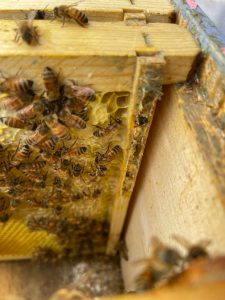 Honey bees have been making propolis for millions of years and ancient humans after having learned of its benefits, have been using it for thousands (Bioregulatory Medicine Institute, 2020). The ancient Greeks, Egyptians and Romans were aware of the healing properties of propolis and made extensive use of it in medicine (Krol, 2013). The Greek physician Hippocrates (who was considered the father of medicine) recognized the healing properties of propolis.
Honey bees have been making propolis for millions of years and ancient humans after having learned of its benefits, have been using it for thousands (Bioregulatory Medicine Institute, 2020). The ancient Greeks, Egyptians and Romans were aware of the healing properties of propolis and made extensive use of it in medicine (Krol, 2013). The Greek physician Hippocrates (who was considered the father of medicine) recognized the healing properties of propolis.
In more modern times, 1967-1973, Dr. Karl Lund Aaggaard (also known as Dr. Propolis) studied the effects of propolis on over 50,000 patients. He concluded that the propolis can be used for many health aliments such as open wounds, sinus congestion, ulcers, eczema, pneumonia, arthritis, lung disease, stomach virus, headache, circulation deficiencies, warts, conjunctivitis, periodontal disease, intestinal infection, bronchitis, colds, disease of the ears, gout and swelling of the throat (Honey bee propolis, Feb 2020).
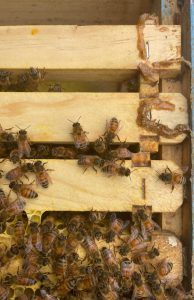 For my purposes, I have decided to focus on propolis and how it is used in wound care management. Wound health is a complex phenomenon characterized by a sequence of independent and overlapping events (Noha, 2013). The complicated mechanism of wound healing occurs in four stages homeostasis, inflammation, proliferation and re-modeling (Vohra, 2020). Propolis has many biological and pharmacological properties that aid in all four stages of wound healing. It has been confirmed that propolis has antimicrobials, anti-inflammatory, anti-oxidant, immunomodulatory properties that are beneficial in the four stages of wound care management (Sarfaroj, June 2022).
For my purposes, I have decided to focus on propolis and how it is used in wound care management. Wound health is a complex phenomenon characterized by a sequence of independent and overlapping events (Noha, 2013). The complicated mechanism of wound healing occurs in four stages homeostasis, inflammation, proliferation and re-modeling (Vohra, 2020). Propolis has many biological and pharmacological properties that aid in all four stages of wound healing. It has been confirmed that propolis has antimicrobials, anti-inflammatory, anti-oxidant, immunomodulatory properties that are beneficial in the four stages of wound care management (Sarfaroj, June 2022).
The first benefit of propolis to wound care management is through its antimicrobial properties (Martinetti and Ranzato, 2015). Antimicrobials share the common interest of reducing the possibility of infection and sepsis in a wound. Antimicrobials can be broken down into several agents such as antibiotics, antiseptics, antivirals, antiparasitics and antifungals (WHO, 2021). Propolis gains its antimicrobial properties due to its high flavonoid content (Grange and Davey, 1990). Honey bee’s collect flavonoids by collecting nectar, pollen and plant resins. Flavonoids are well known as antimicrobial agents which provide defense against a wide range of pathogenic microorganisms. One of the most common wound management tasks is controlling/limiting infections (Wound Source, 2021). A wound may become infected when there is a break in the skin which allows pathogenic microorganisms to enter. Applying propolis to the infected wound would be beneficial due to its antimicrobial properties. The antimicrobial properties of propolis enable it to successfully fight against different microorganisms (bacteria, virus, fungus, parasites). In addition, propolis has also been used on patients’ wounds when the microorganisms become resistant to common medicines (WHO, 2021). This is often referred to as antimicrobial resistance (AMR). Propolis has helped in modulating the antimicrobial resistance of highly resistant bacteria. Propolis can be beneficial in wound management by limiting or inhibiting the growth of pathogenic microorganisms and also by being very potent to these pathogenic organisms which may have grown resistant to “conventional antibiotics” (WHO, 2021).
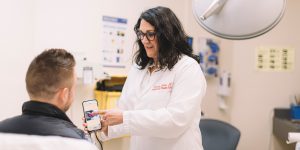
Dr. Karen Cross MD, PhD, FRCSC (Plastic and Reconstructive surgeon). Dr. Cross uses bee products (honey and propolis) when treating patients wounds.
The anti-inflammatory properties of propolis also make it very effective in treating wounds (Johnson, 2021). The second phase of wound healing is the inflammatory phase. Inflammation is the body’s natural response by which the body repairs damaged tissue. Inflammation has been shown to delay wound healing and may result in increased scarring. Furthermore, chronic inflammation is a hallmark for the non-healing wound (Eming, 2007). Propolis’s anti-inflammatory properties are associated with polyphenols, which would be the flavonoid component (Martinotti and Ranzato, 2015). The flavonoids regulate the enzymes needed to cause inflammation. They reduce the production of these enzymes, this reduces inflammation. By decreasing the inflammation in a wound, it allows it to heal quicker. When using propolis for wound management, it is applied directly to the open wound. Propolis has been shown to reduce the inflammatory response. As a result, the healing process was faster and the level of pain and discomfort to the patient was lessened (Martinotti and Ranzato, 2015).
The third property of propolis that benefits wound management is that it has antioxidant properties. Propolis contains a high percentage of polyphenols (flavonoids and phenolic acids) which provides propolis with its powerful antioxidants (Adham and Hassan, 2022). Antioxidants are compounds that inhibit oxidation, a chemical reaction that can produce free radicals and chain reactions that may damage cells of organisms (Wikipedia, 2022). Free radicals damage contributes to the etiology of many chronic health problems such as cardiovascular disease, inflammatory disease, cataract cancer and tissue damage (wounds). Wound healing depends on low levels of reactive oxygen species and oxidative stress. A wound over-exposed to oxidative stress leads to impaired wound healing. Antioxidants are postulated to help control wound oxidative stress and thereby accelerate wound healing. The patient can receive the antioxidant benefits by applying propolis (as an ointment or cream) directly to the wound (as a dressing) (Fitmauruce et al., 2011). Propolis can also be taken by mouth (refined capsule) which would also allow the patient to gain antioxidant properties, aid in wound management and increase healing time.
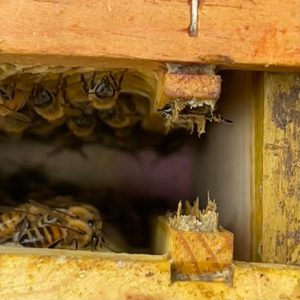 The last medicinal property of propolis that I will discuss in relation to wound care management is its immunomodulatory properties. Immunomodulatory properties mean that propolis can modify the response of the immune system by increasing (immunostimulants) or decreasing (immunosuppressives) which will help the body’s wound healing. Propolis is a complementary and alternative agent that promises to achieve a more effective immune system when the immune response is not sufficient to control a specific infection (Hariri, 2019). Propolis gains this medicinal property due to the flavonoids and some of the phenolic acids. In summary, the healing process of the immunomodulatory in propolis is that it can assist in healing by either empowering or suppressing the actual immune system. As a result, the wound heals faster. A healthy immune system is important for good wound healing.
The last medicinal property of propolis that I will discuss in relation to wound care management is its immunomodulatory properties. Immunomodulatory properties mean that propolis can modify the response of the immune system by increasing (immunostimulants) or decreasing (immunosuppressives) which will help the body’s wound healing. Propolis is a complementary and alternative agent that promises to achieve a more effective immune system when the immune response is not sufficient to control a specific infection (Hariri, 2019). Propolis gains this medicinal property due to the flavonoids and some of the phenolic acids. In summary, the healing process of the immunomodulatory in propolis is that it can assist in healing by either empowering or suppressing the actual immune system. As a result, the wound heals faster. A healthy immune system is important for good wound healing.
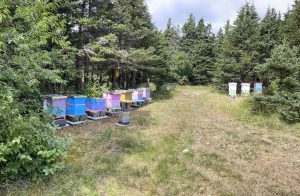 In closing, the use of propolis is slowly gaining popularity in the medical system. Unfortunately, there are some misbelievers. I interviewed a dermatologist/surgeon from St. Michaels Hospital in Toronto, Ontario. She explained “the use of propolis for wound care is real. People laughed at me when I started using it, until wounds healed and the patients stopped complaining of pain.” The other benefits of using propolis in wound care management is that it is less expensive to our medical system, there are no known severe or serious interactions with other drugs, it is safe for most people to use (with no known severe interaction with other drugs), it is readily available, has very few side effects and a person cannot overdose on it. With more education for the general public and our medical community, propolis could be used more frequently in wound care management.
In closing, the use of propolis is slowly gaining popularity in the medical system. Unfortunately, there are some misbelievers. I interviewed a dermatologist/surgeon from St. Michaels Hospital in Toronto, Ontario. She explained “the use of propolis for wound care is real. People laughed at me when I started using it, until wounds healed and the patients stopped complaining of pain.” The other benefits of using propolis in wound care management is that it is less expensive to our medical system, there are no known severe or serious interactions with other drugs, it is safe for most people to use (with no known severe interaction with other drugs), it is readily available, has very few side effects and a person cannot overdose on it. With more education for the general public and our medical community, propolis could be used more frequently in wound care management.
References
Adham, Eithar., Hassan Amal., Evaluating the role of propolis and bee venom on the oxidative stress. Scientif reports., 2022, 02-16,
Braakhuis, Andrea. Evidence on the Health benefits of supplemental Propolis. Nutrients 2019, Nov:11 (11)
Bioregulatory Medicine Institute. Honey Bee Propolis. Supporting the Science of Self–Healing. February 7, 2020.
Eming A Sabine et al J Invest Dermatol., Inflammation in wound repair; molecular and cellular mechanisms Pub Med., 2007., March.
Finstrom Simone Michael and Spivak Marka. Propolis and bee health: the natural history and significance of resin use by honey bees., Apiology., 2019 June Volume 41, Number 3
Fitzmaurice., SD., Sivamani.RK., Isseroff RR. Antioxidant therapies for wound healing Skin Pharmacol Physiol 2011
Grange TM. and Davey RW. Antibacterial properties of propolis (Bee glue)., Journal of the Royal Society of Medicine.,
Hariri Mohammed., Immune boosting agent: Immunomodulation potentials of propolis., Journal of family and Community Medicine 2019 January-April
Johnson, Jon., What are the benefits of Propolis?., Medical news today., 2021-03-10
Khan, Sarfaroj. Propolis. PGD Health Operations. 2022-06-22
Krol Wojciech. Propolis: properties, application, and it potential., Hindawi., 2013-05-05
Martinotti, Simona and Ranzato Eliz. Propolis: a new frontier for healing?. Burns Trauma. 2015;2:9
Noha, Ibrahim. Evaluation of the effect of bee propolis cream on wound healing in experimentally induced type I Diabetes Mellitus. The Egyptian Journal of Histology. 2013- Volume 35 Issue 4
WHO., Antimicrobial resistant., World Health Organization, 2021-11-17
Wound Physicians. The four stages of Wound healing., Vohra., 2020-6-4
Wound Source., Surgical Wound Complications., Wound Source practice accelerator’s blog., 2021-11-29
Wikipedia, Encyclopedia., 2022- 09-11
Author Bio
Raylynn White is from Torbay, Newfoundland, Canada, and her passion in bees blossomed three years ago. By profession she is a social worker, but in her spare time you can find her working away in her apiary. Raylynn recently graduated from the University of Montana’s Masters of Beekeeping program. She intends on using her knowledge to educate people about the importance of the honey bee.








